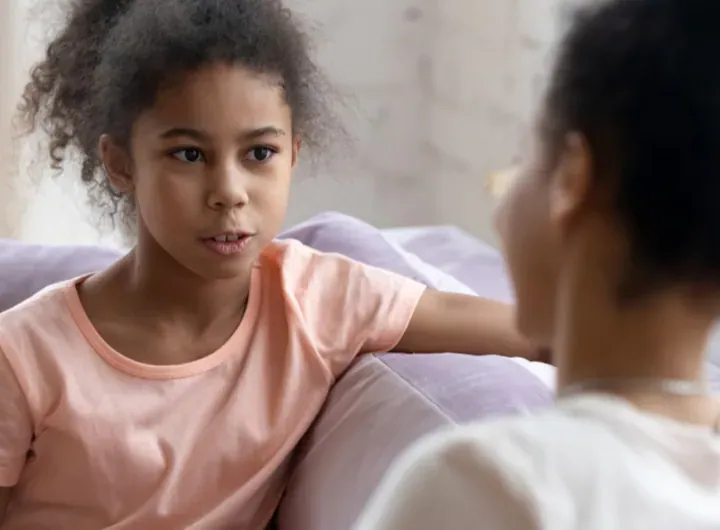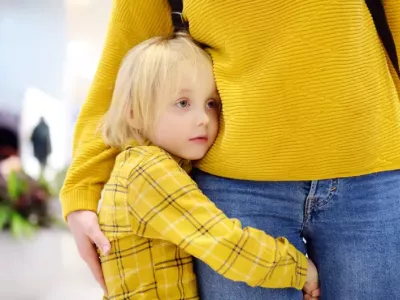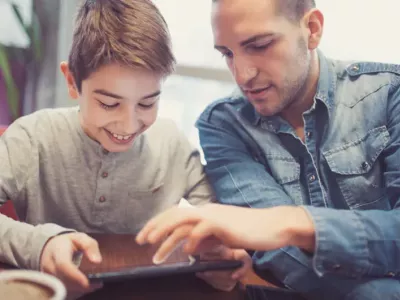When stress makes kids and teens feel sick

Children and teenagers, like adults, may feel sick, dizzy or 'wobbly' when they're anxious. But sometimes they'll struggle to put that into words, and sometimes parents will struggle to work out whether it's a stress reaction or some kind of stomach upset or other illness.
But why does this happen?
Strong emotions and physical effects
The connection between our emotions and our physical sensations is something we continue to learn more about. We already know that expressions such as 'butterflies in the tummy' or 'my heart was racing' are real experiences. Feeling worried or anxious usually causes some real physical symptoms. These can vary from a mild, fleeting sensation to chronic, long-term problems.
Just because a physical symptom is related to an emotion, that doesn't mean it's 'all in the person's head' or they're simply imagining it – or that they're faking it.
When we feel worried or anxious, a whole range of chemicals can be released into the body, as part of ancient survival mechanisms. When our ancestors were being chased by sabre-toothed tigers, these chemicals helped them run fast enough to stay alive.
While each person has an individual response to stress or fear, the basics are the same. When the brain sends out the alarm, it's effectively saying: "there's a threat here!" Our body decides it's time to either confront a situation or run away from it – 'the fight or flight response'. (Alternatively, there's the 'freeze' response. This is when we stay still until the perceived danger passes.)
This is why real physical changes happen in a person's body when they experience anxiety. These changes can mimic physical illness at times: sweating too much, feeling breathless and light-headed, having heart palpitations, headaches and stomach aches. High levels of stress also make it much harder to think clearly.
Is all anxiety bad?
Of course, everyone (kids, teenagers and adults) feels anxious sometimes. Anxiety actually serves an important purpose in situations that could be dangerous. For example, as we approach a busy road, you could say it's anxiety (the expectation of possible threat – a speeding car) that makes us look before crossing. The problem is that a highly anxious person's brain begins to see potential threats almost everywhere.
A bit of stress and having to rise to challenges can be good for us. What's not good is when anxiety becomes a significant problem – causing frequent distress and interfering in people's lives; stopping them from being able to do things they want to do.
Without effective treatment, children don't tend to 'just grow out of' anxiety. Instead, it continues into adolescence and adulthood and increases the chance of other emotional health problems, such as depression. It can also be associated with problems at school, in social situations, and with physical health problems (because of the constantly high level of stress hormones).
What can parents do?
Naturally, as parents we want to ensure medical causes are ruled out, and of course it's quite possible for a child to be both anxious and medically unwell.
The key is to look for signs that a child or teenager is being significantly affected by worries. Are they avoiding situations because they're nervous or fearful? Do they want frequent reassurance? Perhaps, even just the thought of an anxiety-provoking situation can bring on these physical symptoms.
Anxiety can be treated and children and teenagers can be supported to develop coping skills to deal with anxious feelings. It's positive news for parents who want to help their kids break free from symptoms of anxiety.
Why Fear-Less Triple P makes all the difference
Clinically significant anxiety in children has usually been treated by mental health professionals working directly with children, however I wanted to offer families another option. Since parents and caregivers are the most important people in children's lives, it makes sense to support mums and dads so they can teach their children how to manage anxiety effectively, with easy-to-use strategies. That's why we've developed the Fear-Less Triple P programme, which can now be delivered by accredited practitioners or done as an online programme.
Fear-Less Triple P is for parents and caregivers who'd like to learn how to teach children to manage anxiety effectively. There are different types of Fear-Less Triple P – online, and face-to-face or virtual/remote sessions for groups or individuals. Different regions may offer different types of Fear-Less Triple P.
We've been researching Fear-Less Triple P for 10 years now and indications are that it's just as effective (and in the longer term, more effective) than more traditional, child-based programmes. By reaching parents, we can also help many anxious children who can't or won't attend traditional therapy sessions. Clinical research trials show Fear-Less Triple P also gives everyone in the family (not just one child) the chance to benefit from learning how to manage anxiety effectively. Siblings' anxiety also reduces, and parents feel more confident that they're taking positive steps.

